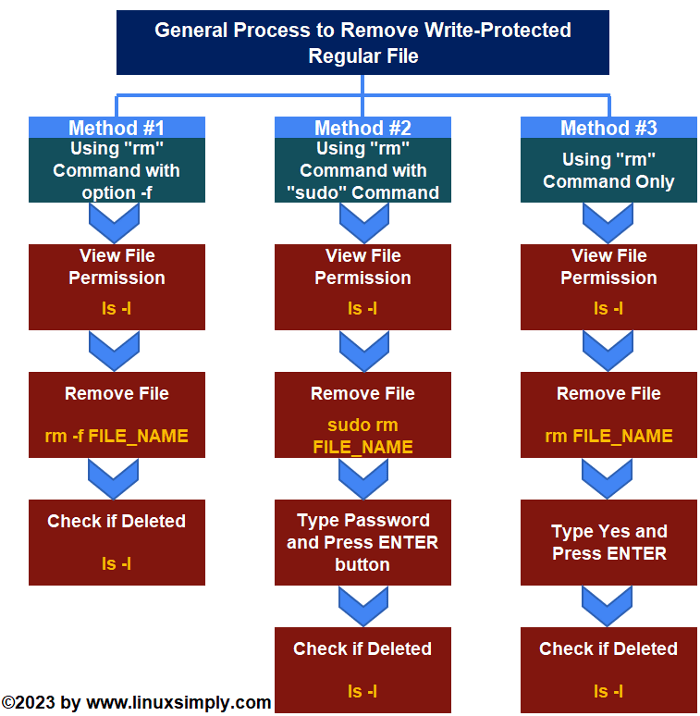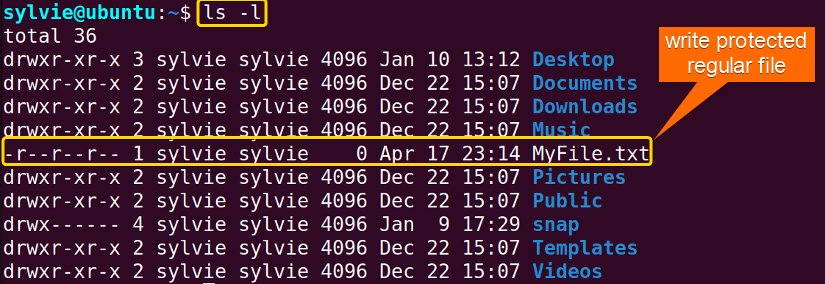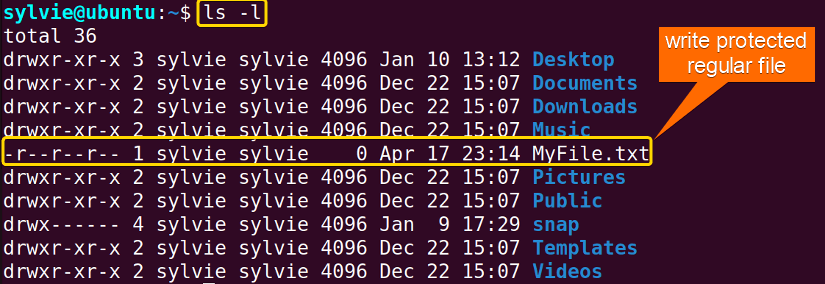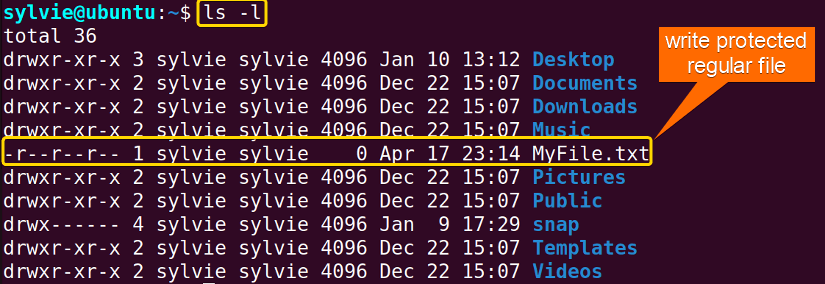To remove a write-protected regular file using the “rm” command in Linux, you can override the write protection by using the sudo command to gain administrative privileges. Here is the command: sudo rm <filename>
In Linux, file permissions are used to determine who can read, write, and execute files on the system. Sometimes, when you try to delete a file, you may encounter an error message that the file is write-protected, indicating that you do not have the necessary permission to delete the file. In this article, I will demonstrate 3 ways to remove a write-protected regular file using the rm command in Linux.
Process flow chart to remove write-protected regular file using “rm” command:
[Distro Used Throughout the Tutorial: Ubuntu 22.04.1 LTS]
3 Methods to Remove a Write-Protected Regular File Using the “rm” Command in Linux
Like other files, you can not remove a write-protected regular file just by using the rm command in Linux. There are several ways to remove a write-protected regular file. Here I am going to show three simple methods to remove a write-protected regular file.
1. Force Removal of Write-Protected Regular File in Linux
To force remove a write-protected regular file in Linux, you can use the rm command with option -f. Here, I am going to force the removal of a write-protected file named MyFile.txt. Follow the steps below for a better understanding:
- To view the file’s permissions, copy the following command in the command prompt:
ls -lEXPLANATION- ls: Shows all the files in a specific folder.
- -l: Option for long listing format.
As you can see in the image above, MyFile.txt is a read-only file which means it is write-protected.
- To remove MyFile.txt, run the following command in the command prompt:
rm -f MyFile.txtEXPLANATION- rm: Removes files.
- -f: Forces file removal.
- MyFile.txt: Write-protected regular file.
- Now, to check whether the file is removed or not, execute the following command in the command prompt:
ls -lIn the snapshot above, you can see I have removed the write-protected regular file named MyFile.txt using the rm command with option -f.
Read More: How to Force Remove Directory in Linux? [Step-by-Step]
2. Remove Write-Protected Regular File as Root User
To remove a write-protected regular file as a root user, you can use the rm command with the sudo command which will ensure the removal of the file in Linux. Here, I am going to remove a write-protected file named MyFile.txt. Follow the following procedure to know more:
-
To view the file’s permissions, type the following command in the command prompt:
ls -lIn the image above, you can see MyFile.txt is a read-only file which means it is write-protected.
- To remove MyFile.txt, execute the command below in the command prompt:
sudo rm MyFile.txtEXPLANATION- sudo: Grants administrative privileges.
- MyFile.txt:: Write-protected regular file.
- Now, to check whether the file is removed or not, run the following command in the command prompt:
ls -lAs you can see in the image above, I have removed the write-protected regular file called MyFile.txt using the rm command with the sudo command.
Read More: Remove All Files from Current Directory in Linux [2 Methods]
3. Remove Write-protected Regular File Using the “rm” Command Only
To remove a write-protected regular file in Linux, you can use the rm command. Here, I am going to remove a write-protected file named MyFile.txt. Follow the process below for a better understanding:
-
To view the file’s permission, write the following command in the command prompt:
ls -lIn the image above, you can see MyFile.txt is a read-only file which means it is write-protected.
-
To remove MyFile.txt, run the command below in the command prompt:
rm MyFile.txt -
After that, type yes and press the ENTER button to continue.
- Then, to check the removal of the file, execute the following command in the command prompt:
ls -lAs you can see in the image above, I have removed the write-protected regular file which is MyFile.txt using the rm command.
Read More: Remove All Files in a Directory with the Prompt in Linux
Comparative Analysis of Methods to Remove Write Protected Regular File Using “rm” Command
As this article presents multiple methods for completing a single task, it is natural to feel uncertain about which one to select. For this reason, I have included a comparative analysis of three different approaches, outlining their pros and cons, to assist you in making a well-informed decision:
| Methods | Pros | Cons |
|---|---|---|
| Method 1 |
|
|
| Method 2 |
|
|
| Method 3 |
|
|
To wrap things up, it is worth noting that all approaches have their own strengths and weaknesses, and the right method for you will depend on your personal preferences. In my opinion, for those who want hassle-free removal of the write-protected file, Method 1 may be the better option. To avoid accidental deletion, you should use Method 2.
Conclusion
In this article, you have learned 3 ways to remove a write-protected regular file using the rm command. You’ve also got to know the comparative analysis among the three methods of removing a write-protected regular file using the rm command. To become a pro in Linux, explore the article thoroughly.
People Also Ask
Related Articles
- How to Remove a User and Home Directory in Linux [2 Methods]
- Undelete Folder in Ubuntu? [With Solutions]
- How to Remove a Non-Empty Directory in Linux [2 Methods]
- 2 Cases of Recursive Remove of Directory in Linux
- 3 Ways to Remove All Files in a Linux Directory
- How to Find and Delete Directory in Linux [3 Methods]
FUNDAMENTALS A Complete Guide for Beginners


 As you can see in the image above, MyFile.txt is a read-only file which means it is write-protected.
As you can see in the image above, MyFile.txt is a read-only file which means it is write-protected.

 In the snapshot above, you can see I have removed the write-protected regular file named MyFile.txt using the rm command with option -f.
In the snapshot above, you can see I have removed the write-protected regular file named MyFile.txt using the rm command with option -f.

 As you can see in the image above, I have removed the write-protected regular file called MyFile.txt using the rm command with the sudo command.
As you can see in the image above, I have removed the write-protected regular file called MyFile.txt using the rm command with the sudo command. In the image above, you can see MyFile.txt is a read-only file which means it is write-protected.
In the image above, you can see MyFile.txt is a read-only file which means it is write-protected.
 As you can see in the image above, I have removed the write-protected regular file which is MyFile.txt using the rm command.
As you can see in the image above, I have removed the write-protected regular file which is MyFile.txt using the rm command.


